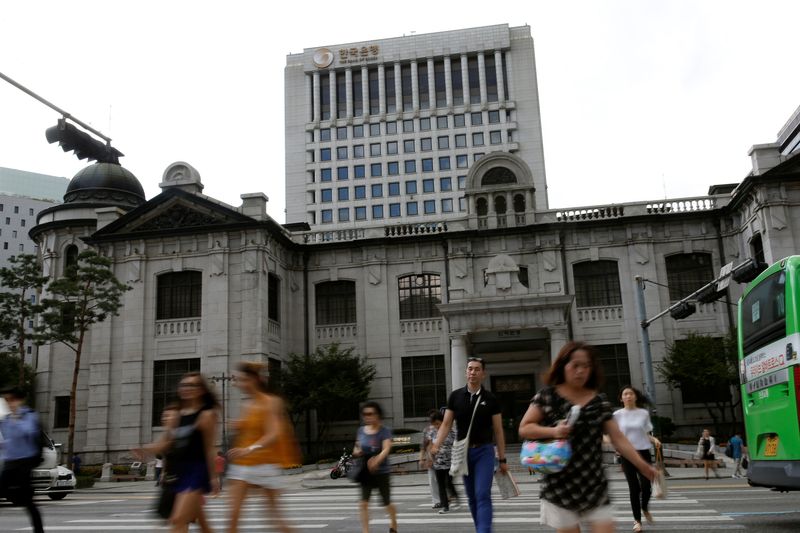By Cynthia Kim and Jihoon Lee
SEOUL (Reuters) -South Korea's central bank said on Friday greater uncertainty on the inflation outlook and the strength of exports argued against a near term push to cut interest rates after the bank left the policy rate steady at a 15-year high.
"To give a six-month ahead outlook or so, all of the board members including myself deem it's difficult to make a call on the possibility of a rate cut for the second half," Bank of Korea Governor Rhee Chang-yong said in a post-policy news conference after keeping its key rate at 3.50%, as expected by all 39 analysts polled by Reuters.
The Bank of Korea (BOK) has argued it needs to see more progress on prices to gain confidence that they are moving towards the bank's 2% target before lowering borrowing costs.
While Rhee flagged it might be difficult to reduce rates this year, there was a crucial change in the central bank's policy statement, suggesting a cut was still possible.
The BOK said it "will keep its restrictive monetary policy stance for a sufficient period of time", a shift from its statement in February, when it said restrictive policy would be maintained for "a sufficiently long period of time".
South Korea's policy-sensitive three-year treasury bond yield pared some losses during Rhee's news conference, after falling by as much as 7.3 basis points to 3.393% on the policy statement.
"There has been a degree of ambiguity in Rhee's communication on Friday," said Cho Yong-gu, an analyst at Shinyoung Securities.
"Rhee said he did not signal for a cut and that it's difficult for board members to make predictions ... but at the same time, the omission of the word 'long' in the statement signals that the door for a rate cut is open for the next six months," Cho said, who sees two rate cuts in the second half.
Analysts expect the BOK to deliver a 25 basis-point cut in both the third and fourth quarters, taking the benchmark rate down to 3.00% by the end of this year from 3.50%, currently.
Rhee said the bank will monitor policies abroad, where the European Central Bank signalled it could start cutting in June, while uncertainty is rising over how soon the U.S. Federal Reserve may cut.
That divergence meant the BOK could pace its moves downward independently, based on domestic prices.
"The Fed's signal that a pivot is underway allows more room for us to be decoupled," Rhee said.
The consumer price index (CPI) advanced 3.1% in March year on year, the same pace as February after three months of easing, stoking views that it's still too early for the BOK to consider easing.
Exports rose for a sixth straight month led by robust sales of chips, adding to the case for the BOK to keep rates high.
The worry for the BOK is the higher oil prices and improving exports could drive a fresh round of inflationary pressure, at a time when a weak won has also become a headache.

Down by about 6% against the dollar this year, policymakers worry a weakening currency could inflate the cost of importing fuel and raw materials, adding to inflationary pressure.
Asked by a reporter whether the won is a worry, Rhee said he is monitoring to see if the won's recent declines are excessive, and that the bank has measures to stabilize the currency market if needed.